
 |
Understanding Internet Address Space Usage |
|---|
"Understanding Internet Address Space Usage" is a video by Aniruddh Rao, John Heidemann, and Xue Cai describing IPv4 address space allocation and how we study utilization.
On Vimeo:
Understanding Internet Address Space Usage from Aniruddh Rao, John Heidemann, and Xue Cai on Vimeo.
HTML5 Video:
Alternatives: download and watch the video off-line or view the video on Vimeo.
The video starts by describing how we conduct an Internet Census:
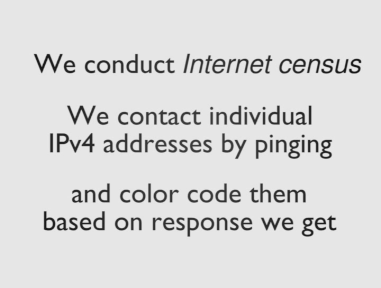
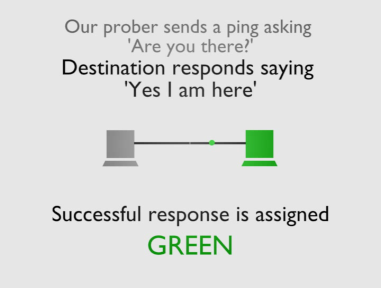

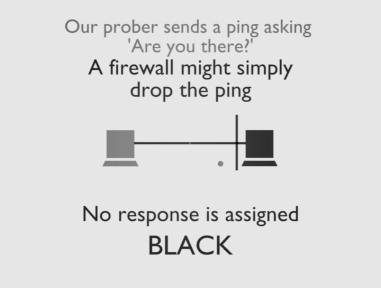
Then it describes what IPv4 addresses are:
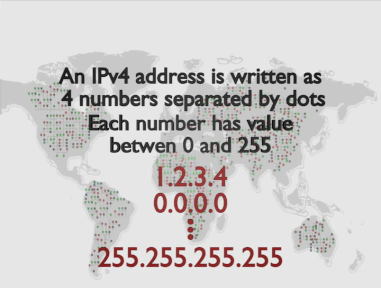
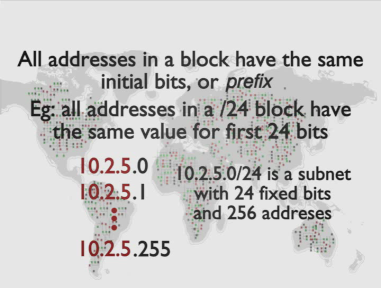
And how we show them in two dimensions:
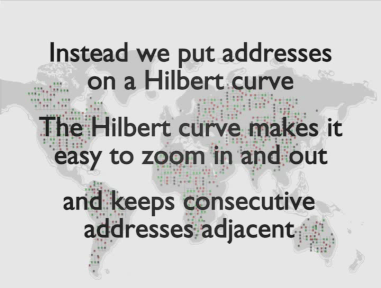
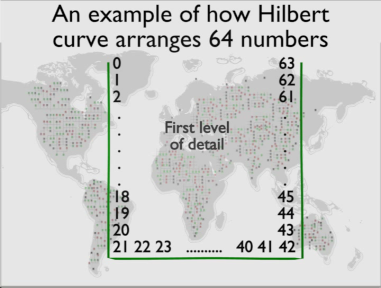

When we plot all 4 billion addresses on a map, allocation blocks show up as large "squares" with similar colors. They're squares because the Hilbert curve places adjacent addresses near each other; they have similar colors because they respond to our probes in similar ways:

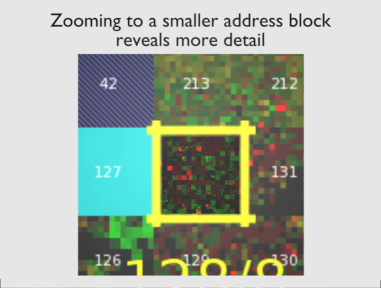

We can zoom in on individual organizations and individual IP addresses:

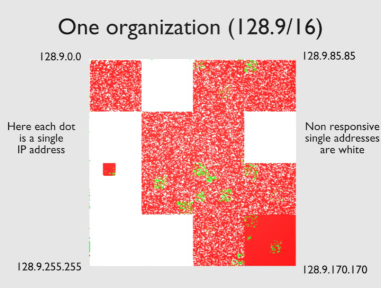
(Note that we permute individual addresses as a privacy preserving measure.)
The maps show that the IPv4 space is very nearly fully allocated---all /8 blocks will soon be given out to the regional registries.

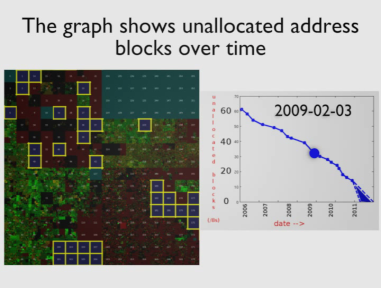
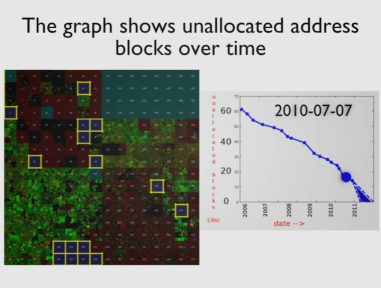
Current best projections (Geoff Huston) suggest that IANA will give out the last /8 blocks in 2011. The pool of unallocated addresses is diminishing:
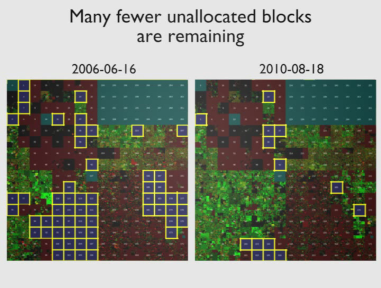

However, overall utilization of IPv4 addresses is fairly low, probably less than 14%.
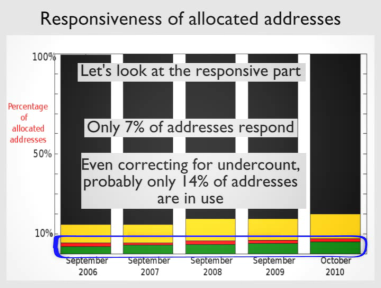
Full allocation of IPv4 addresses means that there will be pressure to make better use of already allocated IPv4 addresses. Our data suggest that there is opportunity to do so.
But higher utilization comes at a price: network operators must now carefully manage what before could be used more freely. This cost will mean more work for network operators, greater inconvenience for some users, and higher costs to operate IPv4 networks. These costs should be weighed against alternatives such as IPv6, with its much larger addresses allowing similar allocation policies.
We have published several technical papers about how we collect and use this data:
All the datasets we generated and analyzed are availabe for further research as part of the PREDICT program. See our list of datasets and the PREDICT website for information about what datasets we make available and how to get them.
We encourage questions and comments
about our work; please feel free to contact us at

Support for this work is through DHS contract NBCHC080035 (the LANDER-2007 project) as part of the PREDICT program, and NSF contract CNS-0626606 (the MADCAT project). Conclusions of this work are those of the authors and do not necessarily reflect the views of sponsors.
Our visualizations of the Internet address space use the Hilbert layout first used by Randall Munroe in xkcd #195.
This video was created by Aniruddh Rao, John Heidemann, and Xue Cai. Census probing by Yuri Pradkin. Census methodology by John Heidemann, Yuri Pradkin, Ramesh Govindan, Christos Papadopoulos, Joseph Bannister.
